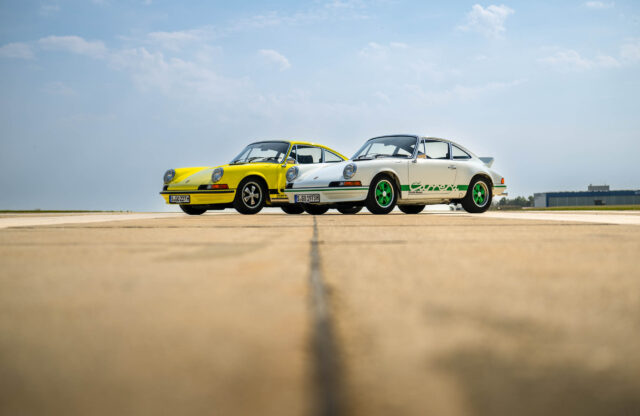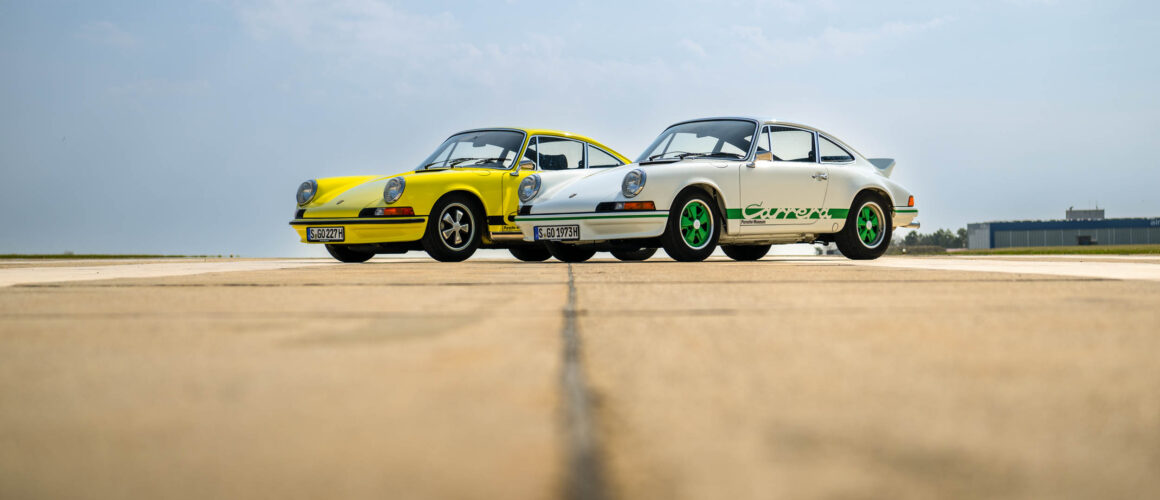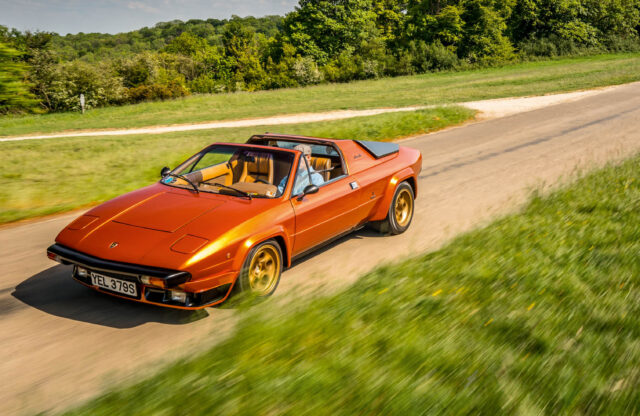It’s 50 years since Porsche launched the 911 Carrera RS 2.7, the most iconic 911 of all – and first to wear a tail spoiler. Matthew Hayward meets the aerodynamicist responsible, and compares both versions of the legend
‘Everybody was laughing at this 911 on the test track. They said there’s no way it can be faster with that strange thing on the rear… But it turned out well.’ There’s no denying that Tilman Brodbeck – father of Porsche’s ‘ducktail’ spoiler – had his work cut out when he was instructed to ‘fix’ the 911’s on-track behaviour, but the young engineer employed his background in aeroplane technology and aerodynamics and did exactly that. Days spent tinkering in the wind tunnel sparked a legend: the 911 Carrera RS 2.7.
The very mention of those two letters (for Renn Sport, German for ‘racing sport’), should be enough to make the hairs on the back of any Porsche fetishist’s neck stand on end. It’s a badge that represents the company’s hunger for on-track perfection, and 50 years have now passed since its launch: a watershed moment in the company’s history.
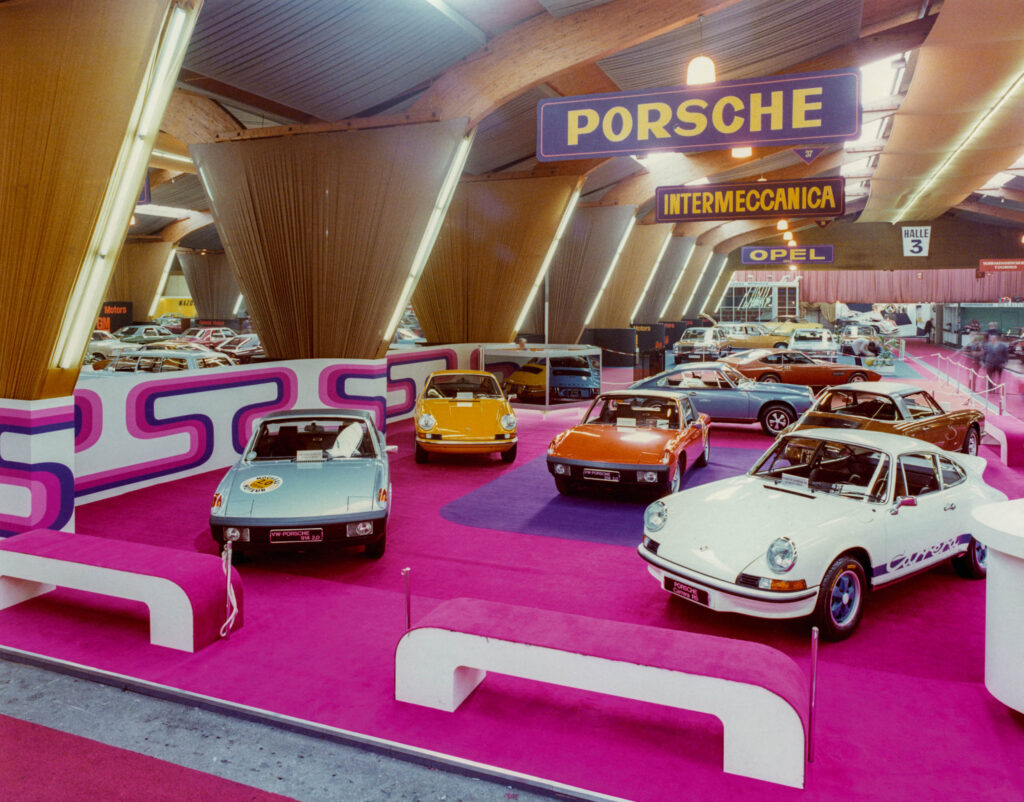
Unveiled to the world at the Paris motor show on 5 October 1972, this was not only the first 911 to wear the Carrera name, but the first Porsche to be christened RS. It was a homologation special, pure and simple, designed from the outset to offer a track-focused 911 to race teams and privateers alike – and boy did it succeed. Yet while it impressed on-track in Groups 3 and 4 racing, the RS 2.7’s on-road manners really catapulted it into stratospheric collector-car territory. Of course, the resulting high values have ensured the RS’s status as something to be worshipped, but after 50 years does Porsche’s RS origin story still deliver the goods?
Since, for the first time, I’m sitting behind the wheel of an absolutely perfect example – a yellow ‘Touring’ straight out of the Porsche Museum – it’s something I’m about to find out. It’s a searingly hot day just outside Stuttgart at the site of Porsche’s ‘secret bunker’, which holds the majority of the company’s historic collection when it’s not on show. It’s enlightening to see the slender original RS in the presence of follow-up 964 and 993 RS – not to mention pretty much one of every 911 GT3.
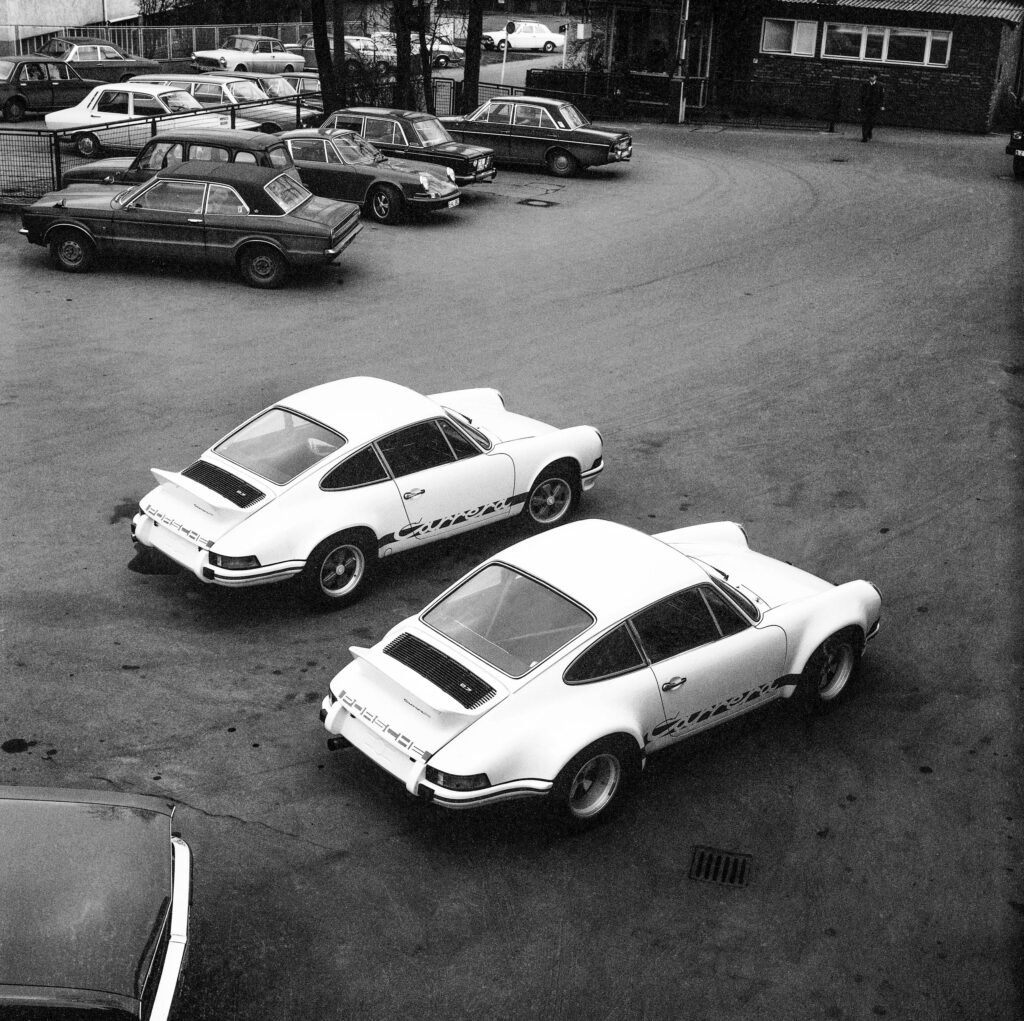
The occasional pop and crackle from the exhaust on the overrun is the main give-away of this car’s thoroughbred, track-focused nature. Under the engine cover sits a 2.7-litre version of the air-cooled flat-six found in the 2.4S, on which the RS was initially based. It’s civilised and very tractable at low speed thanks to fuel injection, but state-of-the-art low-friction Nikasil-coated cylinder walls are really the only radical change, there to strengthen the dangerously thin bore walls of an engine that hadn’t been intended for such a capacity stretch – yet that very hike is how it achieved the 207bhp power figure.
The first few sedate miles skirting around some of the more populated towns and villages reveal this car’s approachable character. The steering is light, even at low speeds, and while working out where all the gears are in the somewhat vague gate can take a little patience (again, standard for a 911 of this age), the shift itself is satisfying. Aside from the typical offset driving position, it’s surprisingly comfortable too. In M472 Touring spec, the interior is almost entirely put back to 2.4S trim, with big, comfortable seats and all the standard interior items.
There’ll be more driving later. Meantime, aerodynamicist Brodbeck has a tale to tell about that tail – and more. Having made his way into Porsche as a body engineer, he found that his background in aeroplane technology and aerodynamics gave him a skillset that was put to good use on the 911: ‘There was a problem with the early car. It was very light at the front end, and in the beginning we put lead into the front bumper to make it a little heavier. After one year of research and testing and trying, we were in the wind tunnel at Stuttgart University, where we came to this special shape for the front bumper.’
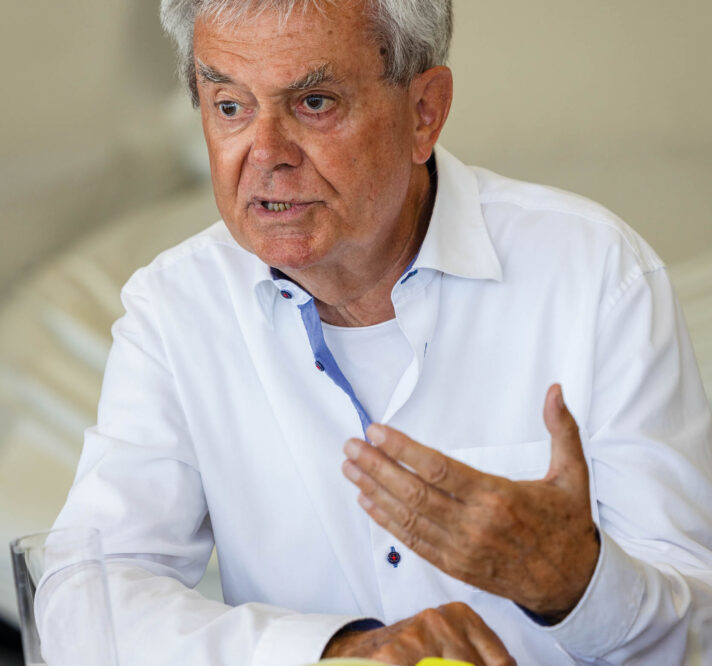
The outcome was a kind of spoiler, although it was not perfectly styled. It wasn’t the first time we had something like this, but there was no such thing in production cars before that
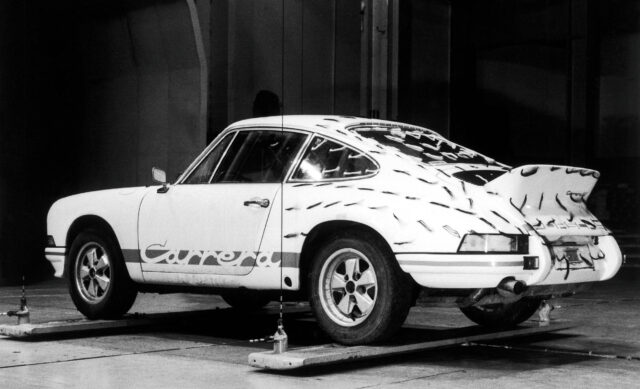
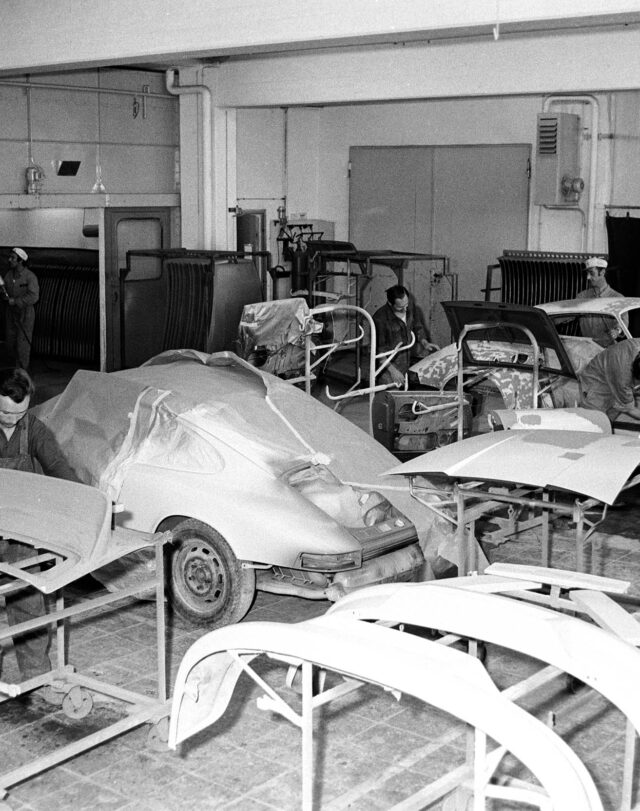
Fitting Brodbeck’s new valance to the 911 2.4S resulted in a significant reduction in front-end lift, transforming the car’s high-speed stability. He continues: ‘Ferdinand Piëch wanted to put this into production as soon as possible, because it also helped the Cd value. The problem was, the purchasing department said it would take at least two years to create the tools and dies for a steel part at the time. Piëch had the idea of glassfibre. But what would happen if you hit the kerb and it cost a lot of money to replace? Piëch was happy because that would help to sell more spare parts!’
Brodbeck had solved one of the biggest problems of the early 911, and was subsequently called into the office of Helmuth Bott, head of R&D at Porsche: ‘I was still very young [just 26 years old], and if you are called by him you immediately assume that there’s something wrong! He told me and my boss that we have a big problem. The customers who are racing with the 911 are having big trouble with BMWs and the six- cylinder Ford Capris on track. They are faster in the curves than our customers… and they have a Porsche. It is simply not possible. He told us both, “You have to do something. I don’t know what we have to do, anything, but not a new car. Something people can change on their own cars.” So we left the office to think of ideas.’
Although Porsche had experimented with aerodynamics, Brodbeck found a spark of inspiration in the most unlikely place: ‘I had a Fiat 850 coupé when I first started driving. I loved this small car, which was rear- engined just like a 911. Two years later, I bought the newer version with five more horsepower. I was astonished, as it was really a lot faster than the old one – and the only thing I had in my mind as an engineer was that it could not just be the extra five horsepower. The first 850 had a smooth rear end, and the new model had a curvature on the engine lid with a kind of little tear-off edge. I asked my friends at the wind tunnel for models, in Darmstadt, where I’d started my career, if they thought this had something to do with aerodynamics, and they said “No, it’s just styling.” In truth, nobody knew at that time, but it stayed in my mind.’
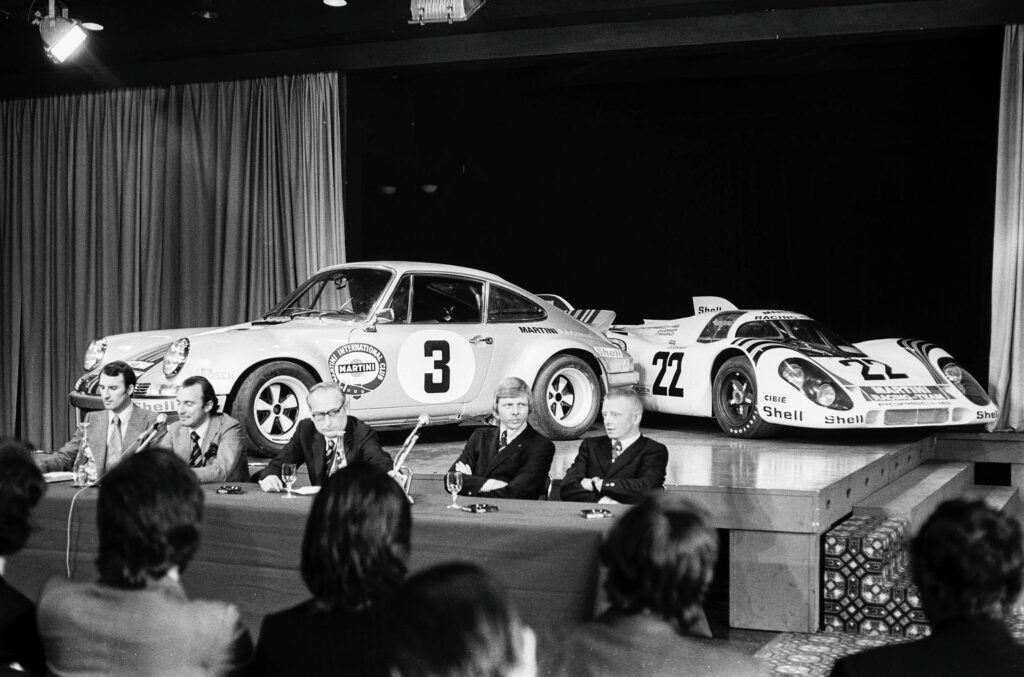
Brodbeck’s thoughts turned to the rear of the 911. ‘Maybe we can do something about the engine lid? With the 2.4S, we knew there were vortices forming behind the roof somewhere, and we tried to form smoother streams with some kind of tear-off edge. So we worked in the wind tunnel using different panels made of welding wire. We spent 21⁄2 days doing only that, and the thing was complete. The outcome was a kind of spoiler, although it was not perfectly styled. It wasn’t the first time we had something like this, but there was no such thing in production cars before that.’
The results were very encouraging. ‘Lift was reduced dramatically at the rear of the car. We returned to Weissach with the data, and Mr Bott saw the potential. Test driver Günter Steckkönig was instructed to drive the car on the test track in Weissach, with and without the spoiler.’ As expected, the car was much quicker with the spoiler, which soon earned the ‘ducktail’ nickname.
Perhaps surprisingly, given how iconic the 911 tail spoiler became, this first edition attracted more than a few puzzled looks from Porsche colleagues. And even though Brodbeck had proven its effectiveness, there were many challenges ahead. ‘As a young engineer, I had to address the styling studio. I told them how long and how high; they just had to make it stylish.’ Then there was the issue of making it road legal. ‘There were a lot of discussions because they said it’s too dangerous, posing a risk to motorcyclists. Porsche and the regulator came to an understanding. We lowered the edge a little bit, and told them it was only for 500 cars. No- one asked later about the number of cars sold.’
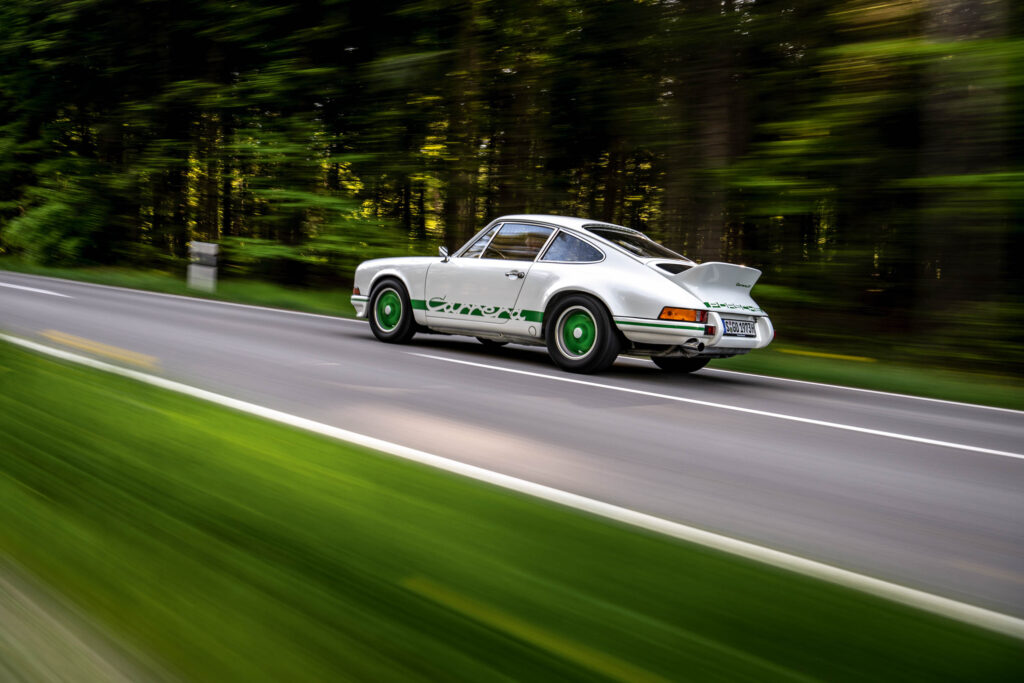
Driving the 2.7 RS today
Back out on the road, the traffic disperses, the roads open up and speeds increase, yet we’re not even close to the velocity required to take advantage of Tilman’s spoiler. It’s the RS 2.7’s significantly beefed-up mechanical package that really makes the difference here. It might seem like standard 911 fare today, but the RS boasted a new staggered wheel- and-tyre set-up – with 185/70 VR15s up front and much wider 205/60 VR15s at the rear, to transmit far more power and torque. The RS’s rear wheelarches were made wider to suit the increase in track, and give the car its trademark muscular look.
The 2.7-litre flat-six isn’t short on low-end grunt, but really starts to wake up as the revs pass 4000rpm. Although it redlines at over 7000rpm, peak power arrives at 6300prm and, with torque peaking at a tad over 5000, it feels unfair to stretch far beyond 6500rpm. Yet it’s when exploring the upper reaches of the engine that you notice just how sharp the throttle is, so that blipping it on downshifts is an absolute joy.
That quick response also plays right into your hands when you start trying to make sense of the handling. The typically light 911 front end requires careful management through the corners, but you can use the super-sharp throttle to your advantage, influencing the attitude of the RS like nothing else. All the time the leather-covered slimline rim of the steering wheel is keeping you well-apprised of the situation. It actually feels like it’s working with you rather than constantly fighting you, which gradually helps you to build a decent amount of trust in the chassis.
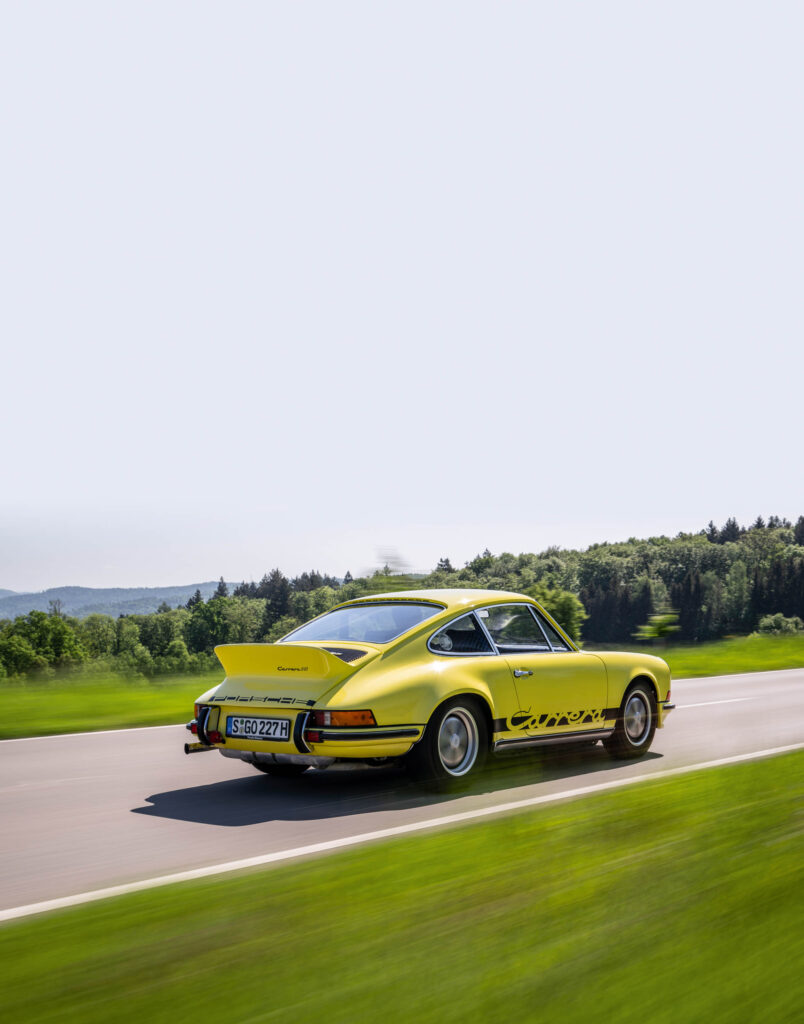
Of course, it’s important to remember that there’s an even more focused and commensurately more valuable sidekick to the RS Touring. And so I’m handed the keys to the ultra-rare M471 ‘Lightweight’ version. These days, the idea of a lightweight version of any performance car is not particularly unusual, but the truth is that this stripped-out version of the RS is how the car was initially intended. It’s also far more extreme in its weight-saving than most. Official figures put its weight at just 960kg when equipped with the optional Sport seats – as fitted to this car. That’s fully 115kg lighter than the Touring. These days, Porsche will charge you more money for the various packages that reduce weight but, in 1973, the Lightweight version was actually the cheaper of the two at DM34,700 (approximately £6000), compared with DM36,500 for the Touring. Just 200 of the total 1580 RS 2.7s were built as roadgoing Lightweights, plus a relatively plentiful 1308 Tourings. The remainder is made up of 17 ‘RSH’ homologation cars, and the 55 competition-spec RSRs.
From a few feet away there isn’t a huge amount to separate the two cars visually, but as I edge closer I notice a few tell-tale signs. Most obvious is the chrome trim missing from the bottom of the sill. Unlatch the door and there’s the unmistakable ‘weightless’ feel usually reserved for full-on competition cars. That’s because, like the front wings and roof skin, the doors of this car are made from thin-gauge steel, complemented by thinner, lightweight glass. In place of the comfortable Touring seats are a simple pair of buckets, and as I slide into the cockpit it’s actually surprising just how pared-back it feels in here. Most noticeable is a big, round blanking panel in place of the standard car’s clock, and only the driver is given the luxury of a sun-visor. It seems obvious to point out that there’s no radio, but even the glovebox lid was deemed an unnecessary extra. Doorcards are again far more basic, with a simple fabric pull to let yourself out again. You still get carpets, but what little sound insulation was present in the Touring is missing here.
The extra road noise is noticeable, but the biggest audible change comes from behind. Mechanically there are no differences between the two cars, but that chatty-sounding engine is certainly more audible. What were subtle pops and bangs from the exhaust of the Touring penetrate the cabin of the identically powered Lightweight with vigour.
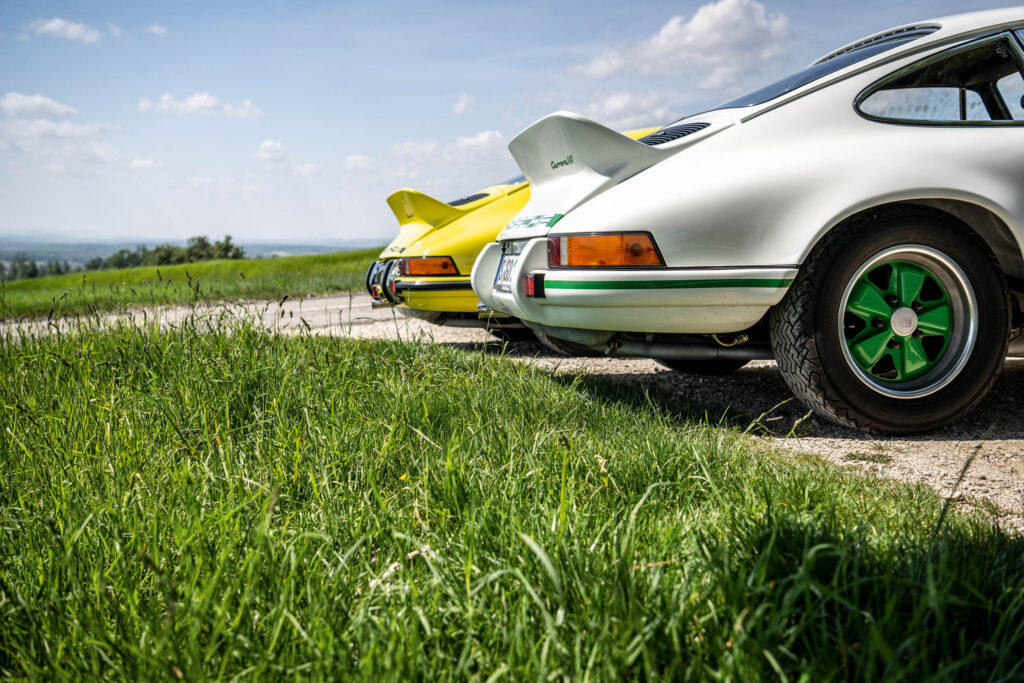
Despite the significant weight advantage, there isn’t a huge difference in the way the Lightweight takes off down the road. Contemporary figures from Auto Motor und Sport timed the Lightweight from rest to 62mph at 5.8sec, compared with 6.3sec for the Touring, so when pushed to the absolute limit the extra performance is obviously there. On track there’s no denying that the weight difference would be night-and-day.
On the road, where you tend to feel the difference is in the ride. The suspension settings are unchanged, but the weight reduction and less forgiving seats project an extra layer of detail into the cabin. Pushing on into a series of quicker bends confirms that the steering has gained a noticeable improvement in turn-in and even a little bit more feedback. Of course, we’re talking the kind of differences you’d notice only when you’d jumped from one type to the other. Even under braking, it would take some serious driving to highlight a genuine difference between the two.
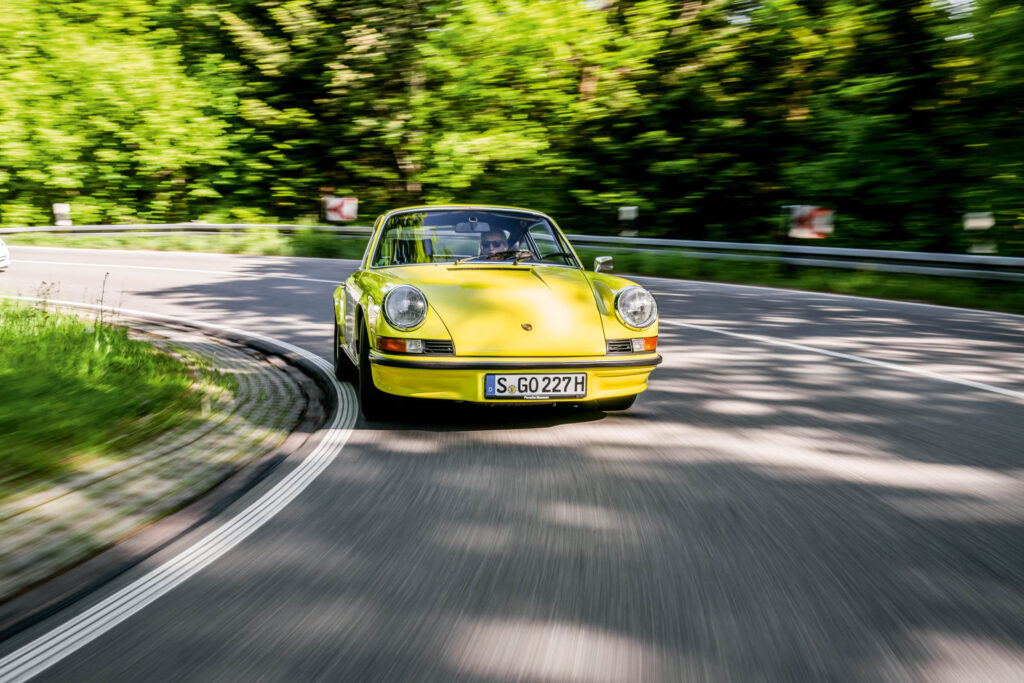
What a day, though. And I get to experience the Touring again on the way back to base. Caught in traffic, I have a few moments to consider both cars. Being handed the keys to two examples of such a special and limited production run on one day is a somewhat surreal event, and it sinks in that the yellow Touring has left the biggest impression. As a pure collectors’ piece, the much rarer, stripped-out Lightweight version ticks all the right boxes, and a genuine example carries a serious premium over the Touring: you’d be talking a sale price of £1m or more at auction, versus £500,000 or so for the ‘regular’ version. Remove all notion of value from the equation, and it’s the Touring that I’d want in my garage.
When it was launched, Porsche’s marketing material described the RS as the car that could do everything from commuting in traffic to weekend racing – without complaining. It’s that lack of complaining that I find most appealing and a genuinely unexpected surprise. After a full day of hard driving in fairly extreme heat, neither of these two cars felt like they had even broken a sweat. Not bad for something celebrating half a century on the planet. Then again, perhaps I shouldn’t be surprised that a 911 – the ultimate ‘no compromise’ version, no less – has proven itself to be not only a brilliant drivers’ car, but every bit as usable as any other of its ilk. That’s the magic of the car, and the proof that its maker achieved its aim.
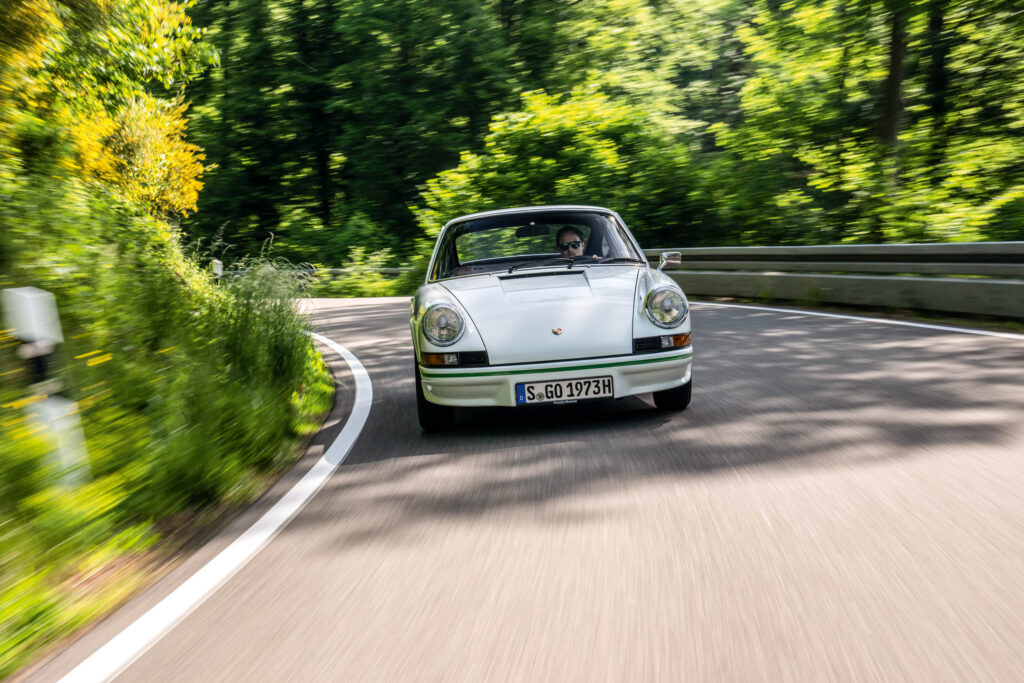
It worked on track, too. As the fearsome 917 had been gradually outlawed from racing, so Porsche concentrated ever more on the 911. The RS 2.7 led directly to the RSR 2.8, and there has been a full-on racing version of the 911 ever since. They are still more common at Le Mans than any other car.
Yet the RS almost never happened: in the final stages of development it was almost stopped in its tracks by the sales team. Brodbeck laughs: ‘We knew we had to sell 500 of these cars to get it homologated, but when it was presented to the sales team it wasn’t looking good. When the head of the sales force was asked how many he thought they could sell, he answered “Ten at most.” Thankfully he was wrong!’
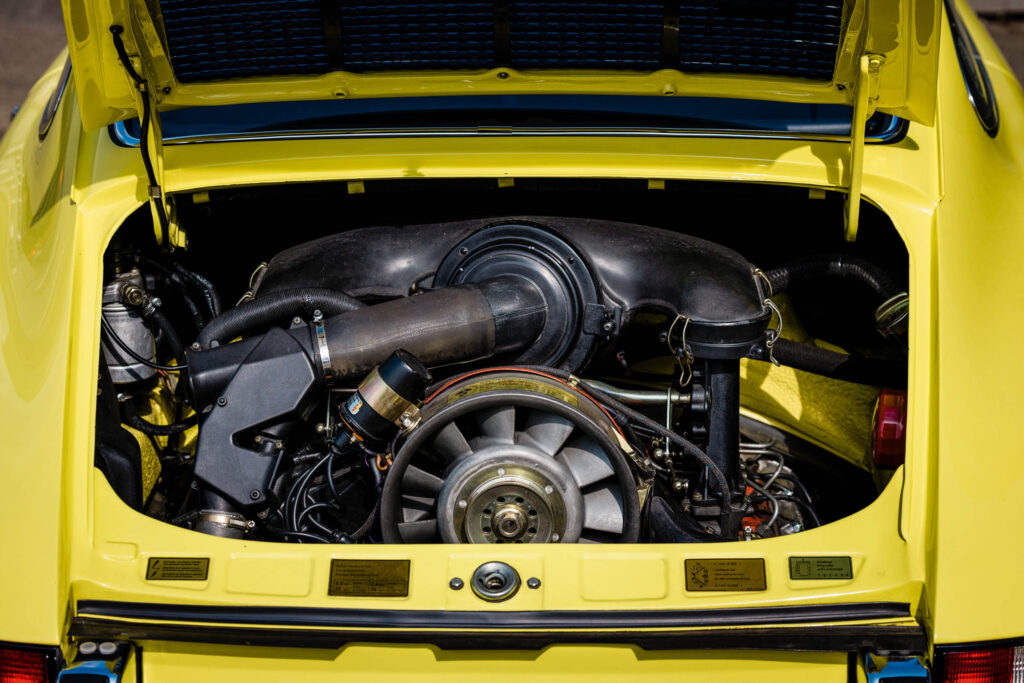
1973 Porsche 911 Carrera RS 2.7 ‘Touring’ specifications
Engine Rear-mounted 2687cc air-cooled flat-six, OHC per bank, Bosch fuel injection
Power 207bhp @ 6300rpm
Torque 188lb ft @ 5100rpm
Transmission Five-speed manual, rear-wheel drive
Steering Rack and pinion
Suspension Front: MacPherson struts, torsion bars, anti-roll bar. Rear: trailing arms, torsion bars, telescopic dampers, anti-roll bar
Brakes Vented discs
Weight 1075kg
Top speed 149mph
1973 Porsche 911 Carrera RS 2.7 ‘Lightweight’ specifications
Engine Rear-mounted 2687cc air-cooled flat-six, OHC per bank, Bosch fuel injection
Power 207bhp @ 6300rpm
Torque 188lb ft @ 5100rpm
Transmission Five-speed manual, rear-wheel drive
Steering Rack and pinion
Suspension Front: MacPherson struts, torsion bars, anti-roll bar. Rear: trailing arms, torsion bars, telescopic dampers, anti-roll bar
Brakes Vented discs
Weight 960kg
Top speed 152mph
